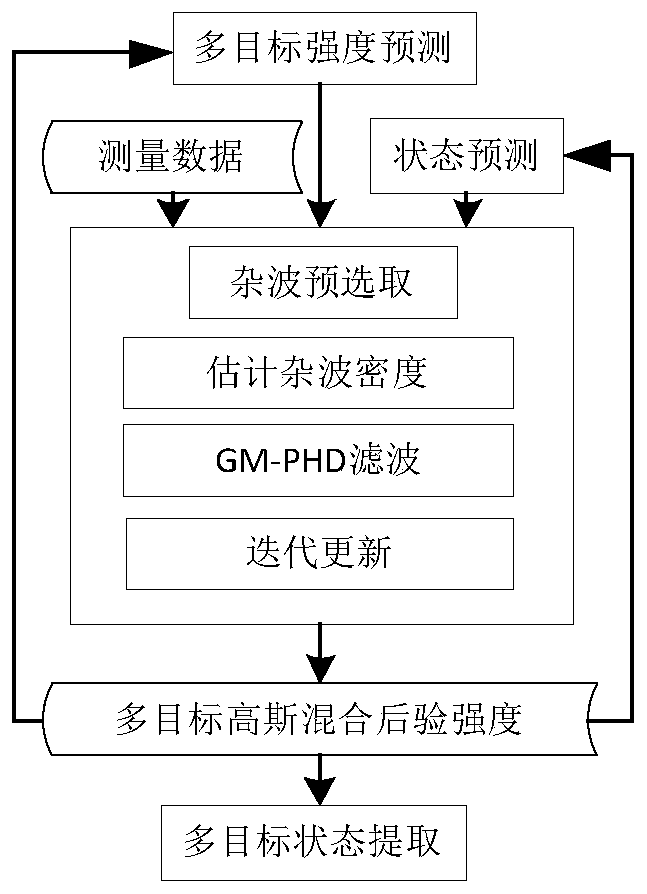Unknown Clutter Passive Co-location Method Based on Sliding Window Cumulative Density Estimation
A technology of cumulative density and co-location, applied in positioning, radio wave measurement systems, instruments, etc., can solve the problems of uneven clutter density, uneven spatial distribution of clutter, high false track rate, etc., and achieve multi-objective solutions. Tracking difficulties, improving multi-target tracking performance, improving robustness
- Summary
- Abstract
- Description
- Claims
- Application Information
AI Technical Summary
Problems solved by technology
Method used
Image
Examples
Embodiment Construction
[0020] The present invention is further analyzed below in conjunction with specific examples.
[0021] Considering that at time k there are N k A flying target in the air moves in a straight line with approximately uniform speed in the detection area of the bi-base station radar, where N k is a non-negative unknown variable. The state of the t-th target is denoted as [x k,t ,y k,t ]and represent the position and velocity of the target in the x and y directions respectively, and record the state set of all targets as The target state transition model is:
[0022]
[0023] Where F is the state transition matrix, T is the sampling interval, I 2 is the second-order identity matrix, Represents the Kronecker product. v k-1 ~N(0,Q) is the process noise, N(m,P) represents the Gaussian function with mean m and covariance P. is the process noise covariance, where σ v is the standard deviation of the process noise.
[0024] Assuming that the measurement of the bi-b...
PUM
 Login to View More
Login to View More Abstract
Description
Claims
Application Information
 Login to View More
Login to View More - R&D
- Intellectual Property
- Life Sciences
- Materials
- Tech Scout
- Unparalleled Data Quality
- Higher Quality Content
- 60% Fewer Hallucinations
Browse by: Latest US Patents, China's latest patents, Technical Efficacy Thesaurus, Application Domain, Technology Topic, Popular Technical Reports.
© 2025 PatSnap. All rights reserved.Legal|Privacy policy|Modern Slavery Act Transparency Statement|Sitemap|About US| Contact US: help@patsnap.com



